
How to Use 5v 2-Relay JD-VCC: Examples, Pinouts, and Specs
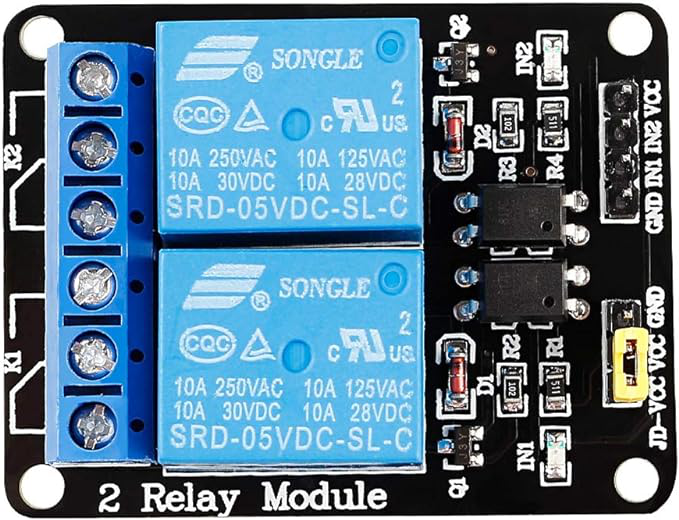
 Design with 5v 2-Relay JD-VCC in Cirkit Designer
Design with 5v 2-Relay JD-VCC in Cirkit DesignerIntroduction
The 5V 2-Relay Module with JD-VCC power supply input is an electronic device used to control high voltage/current loads. It allows a low-power signal from a microcontroller, such as an Arduino, to control larger power circuits. This module is commonly used in automation projects, home appliances control, and in switching devices on and off.
Explore Projects Built with 5v 2-Relay JD-VCC
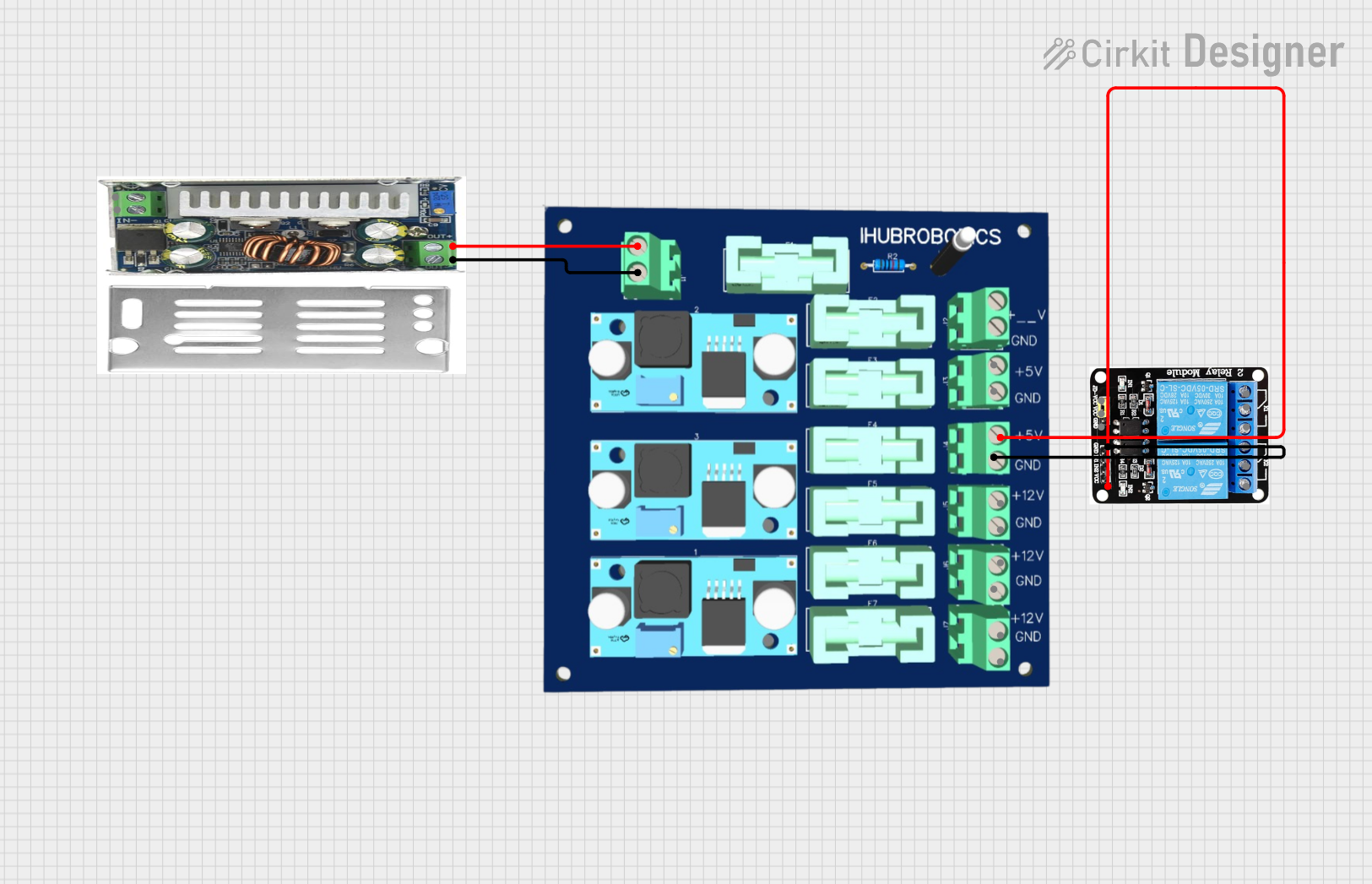
 Open Project in Cirkit Designer
Open Project in Cirkit Designer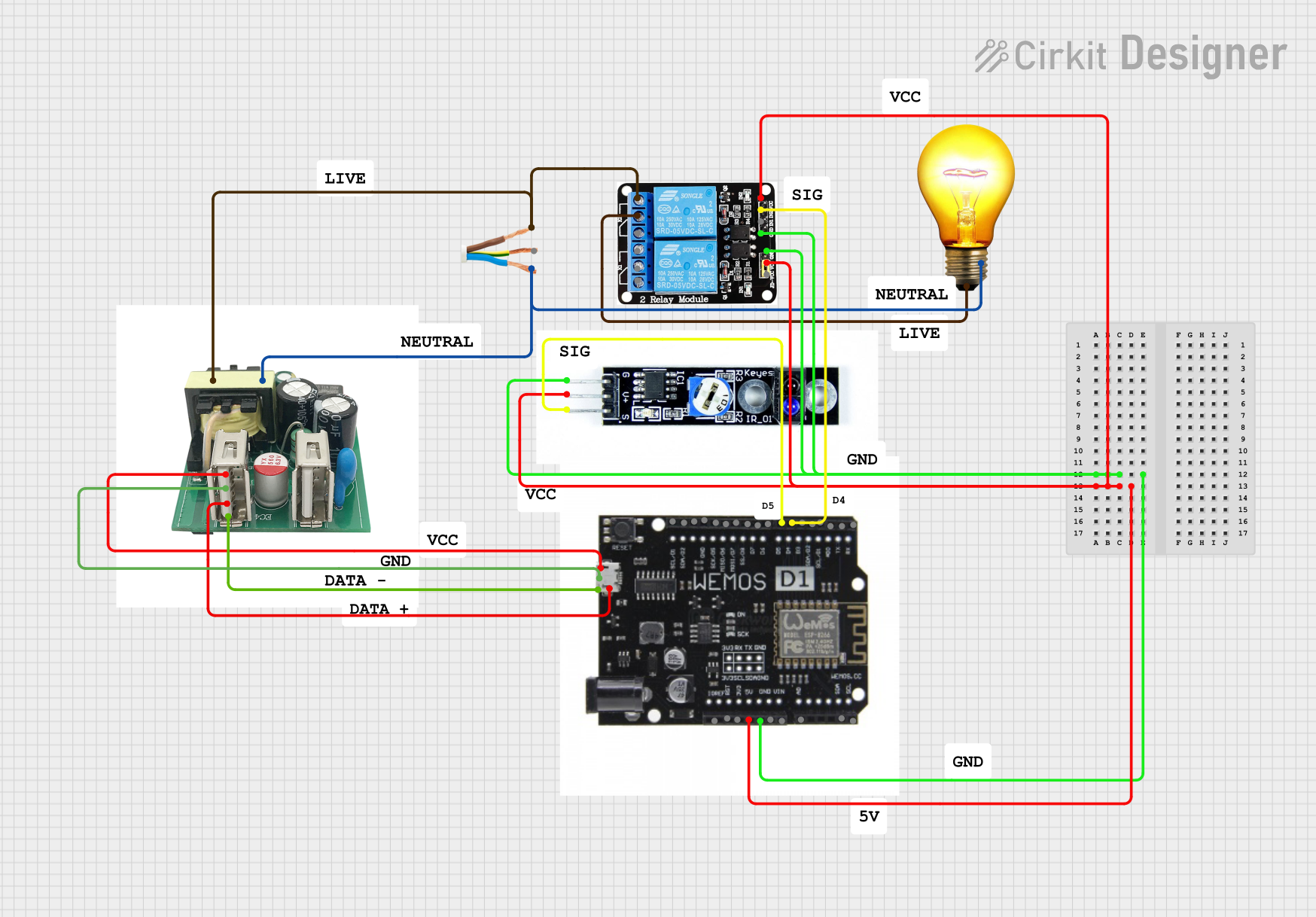
 Open Project in Cirkit Designer
Open Project in Cirkit Designer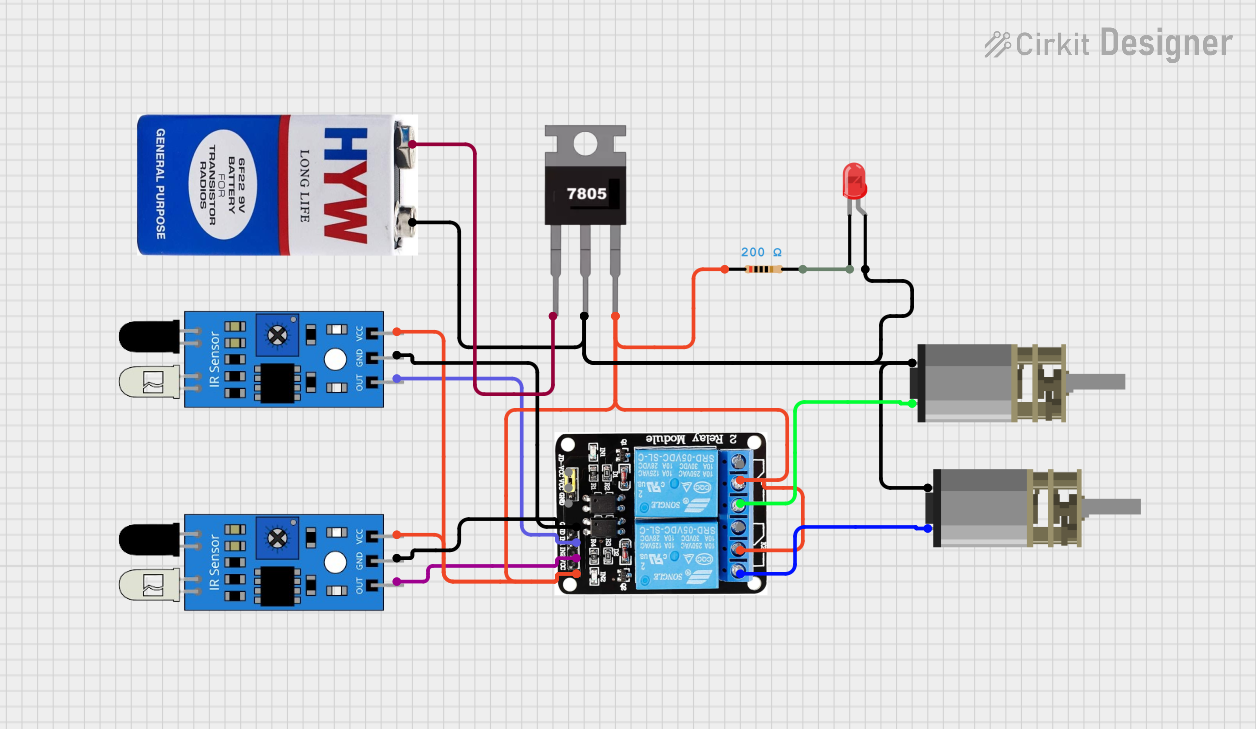
 Open Project in Cirkit Designer
Open Project in Cirkit Designer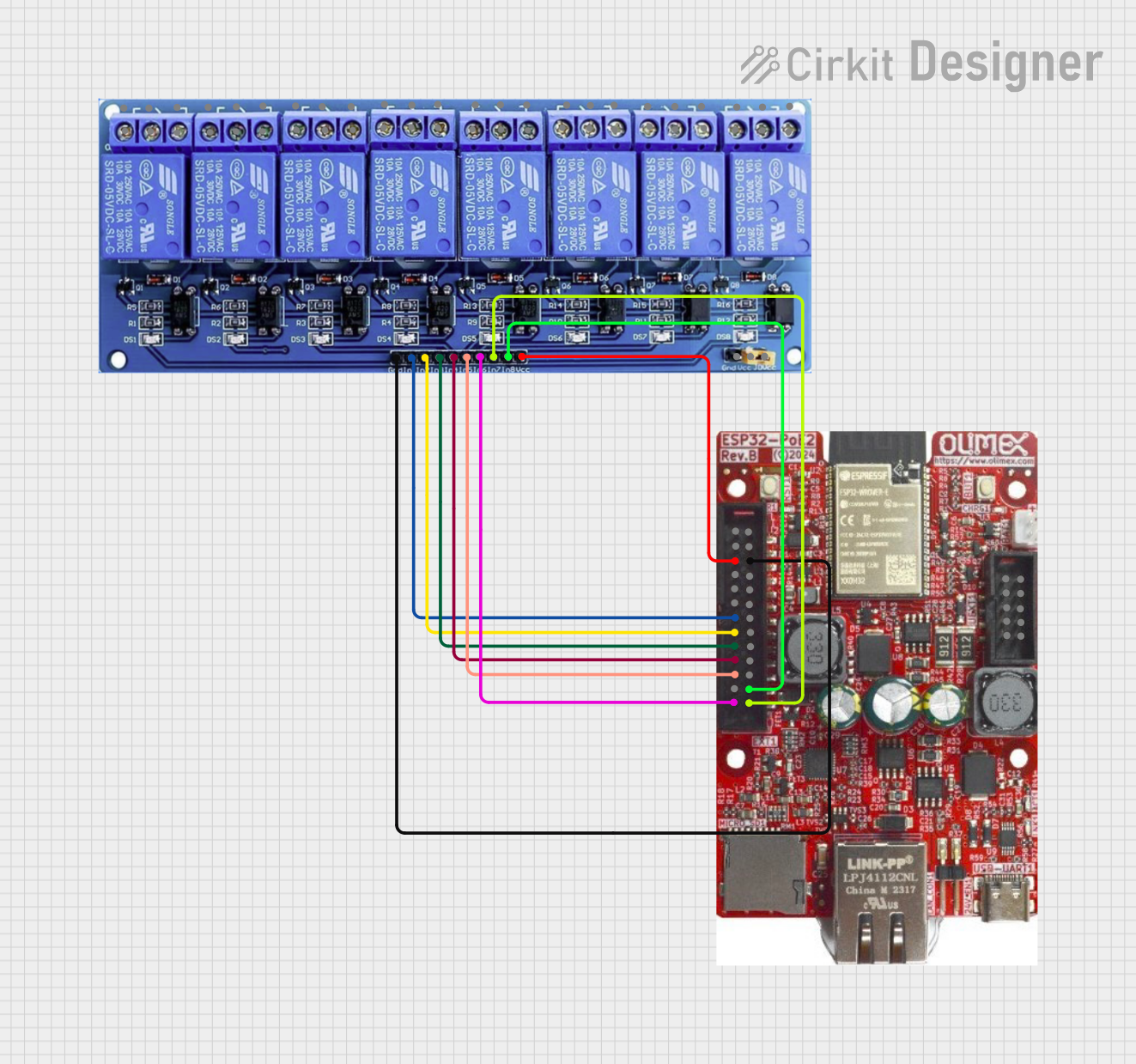
 Open Project in Cirkit Designer
Open Project in Cirkit DesignerExplore Projects Built with 5v 2-Relay JD-VCC

 Open Project in Cirkit Designer
Open Project in Cirkit Designer
 Open Project in Cirkit Designer
Open Project in Cirkit Designer
 Open Project in Cirkit Designer
Open Project in Cirkit Designer
 Open Project in Cirkit Designer
Open Project in Cirkit DesignerCommon Applications and Use Cases
- Home automation systems
- Industrial controls
- Automotive electronics
- Remote controlled switches
Technical Specifications
Key Technical Details
- Operating Voltage (VCC): 5V
- Relay Power Supply (JD-VCC): 4.5V to 5.5V
- Current Consumption: Approx. 70mA per relay
- Maximum Switching Voltage: 250VAC / 30VDC
- Maximum Switching Current: 10A (AC) / 10A (DC)
- Control Signal Voltage: 0V - 0.5V (LOW), 2.5V - 5V (HIGH)
- Control Signal Current: 2mA - 20mA
Pin Configuration and Descriptions
| Pin Name | Description |
|---|---|
| JD-VCC | Relay power supply input (4.5V to 5.5V) |
| VCC | Module power supply input (5V) |
| GND | Ground connection |
| IN1 | Control signal input for Relay 1 |
| IN2 | Control signal input for Relay 2 |
| NO1 | Normally Open contact for Relay 1 |
| COM1 | Common contact for Relay 1 |
| NC1 | Normally Closed contact for Relay 1 |
| NO2 | Normally Open contact for Relay 2 |
| COM2 | Common contact for Relay 2 |
| NC2 | Normally Closed contact for Relay 2 |
Usage Instructions
How to Use the Component in a Circuit
Power Connections:
- Connect the JD-VCC pin to an external 5V power supply if isolation between the relay power and control signal is needed.
- Connect the VCC pin to the 5V output of the microcontroller if isolation is not required.
- Connect the GND pin to the ground of the power supply and microcontroller.
Control Signal:
- Connect IN1 and IN2 to digital output pins on the microcontroller to control Relay 1 and Relay 2, respectively.
Load Connections:
- Connect the device you want to control to the NO (Normally Open) or NC (Normally Closed) and COM (Common) pins of the relay.
Important Considerations and Best Practices
- Ensure that the power supply for JD-VCC is capable of delivering sufficient current for the number of relays being used.
- Do not exceed the maximum voltage/current ratings of the relays to prevent damage.
- Use flyback diodes when controlling inductive loads to prevent back EMF damage.
- Always ensure proper isolation between the low voltage control circuit and high voltage load circuit for safety.
Example Code for Arduino UNO
// Define relay control pins
#define RELAY1_PIN 7
#define RELAY2_PIN 8
void setup() {
// Set relay pins as outputs
pinMode(RELAY1_PIN, OUTPUT);
pinMode(RELAY2_PIN, OUTPUT);
}
void loop() {
// Turn Relay 1 ON
digitalWrite(RELAY1_PIN, LOW); // Assumes active LOW relays
delay(1000); // Wait for 1 second
// Turn Relay 1 OFF
digitalWrite(RELAY1_PIN, HIGH);
delay(1000); // Wait for 1 second
// Turn Relay 2 ON
digitalWrite(RELAY2_PIN, LOW);
delay(1000); // Wait for 1 second
// Turn Relay 2 OFF
digitalWrite(RELAY2_PIN, HIGH);
delay(1000); // Wait for 1 second
}
Troubleshooting and FAQs
Common Issues Users Might Face
- Relay not activating: Check the control signal voltage and connections.
- Intermittent operation: Ensure that the power supply is stable and can provide enough current.
- Clicking sound but no switching: Verify the load does not exceed the relay's maximum ratings.
Solutions and Tips for Troubleshooting
- Double-check wiring, especially the power supply to JD-VCC, VCC, and ground connections.
- Use a multimeter to check the control signal voltage at IN1 and IN2.
- Ensure that the microcontroller's digital output pins are configured correctly.
FAQs
Q: Can I power the module using the same 5V from the Arduino? A: Yes, you can power the module using the 5V from the Arduino if isolation between the relay power and control signal is not required.
Q: What does JD-VCC stand for? A: JD-VCC refers to the relay power supply input, which can be used to separate the relay power from the control logic power.
Q: Can I control AC and DC loads with this relay module? A: Yes, the relay module can switch both AC and DC loads within its specified voltage and current ratings.